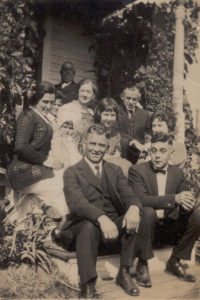Parishes offer liturgies, religious education and help for the needy, among other services. Parishes also have an array of ministry groups that serve. The key questions about each of these offerings and activities, especially in a shrinking parish, is, “How does this activity reflect the Gospel message? Are people welcomed with the compassion of Jesus? How are participants invited to ongoing transformation and conversion? In short, how is this ministry or activity evangelizing?”
First, realize that every parish has ways of communicating the Good News of Jesus to the people who approach the parish with spiritual needs. In other words, every parish already has an evangelization process. But how successful is this overall process? Second, every parish can be more successful by considering these seven overlapping steps as ways to make more progress in evangelizing. Third, every group within the parish could adopt some of these elements as ways to more clearly echo the Good News of the Gospel for parishioners and visitors alike.
1. Befriend –Welcome people to liturgies and events. Includes hospitality ministries, ways people are greeted, and ultimately, the attitudes we have towards others in daily life.
2. Share Faith Stories –Willingness to talk about ways that we have experienced God, especially in one-to-one settings, ministry meetings and in small sharing groups. This also includes planned ‘witnesses’ offered by peers at large gatherings and meetings.
3. Retell the Christ Story –Telling others what we know of Jesus and his mission.
4. Invite to Conversion – Encouraging others to turn to God is a variety of circumstances.
5. Bring into Community –Offer invitations to small and large gatherings, to liturgies and into Jesus-centered relationships within the parish as the local Body of Christ.
6. Call to Discipleship –Living with Jesus as the center of our lives and our life together.
7. Call to Stewardship –Offering our resources (time, talents, treasure) for the furthering of the Kingdom of God and empowering others to enter into the evangelizing process with us.
[Excerpted from Sharing the Faith That You Love]

 __
__ 
